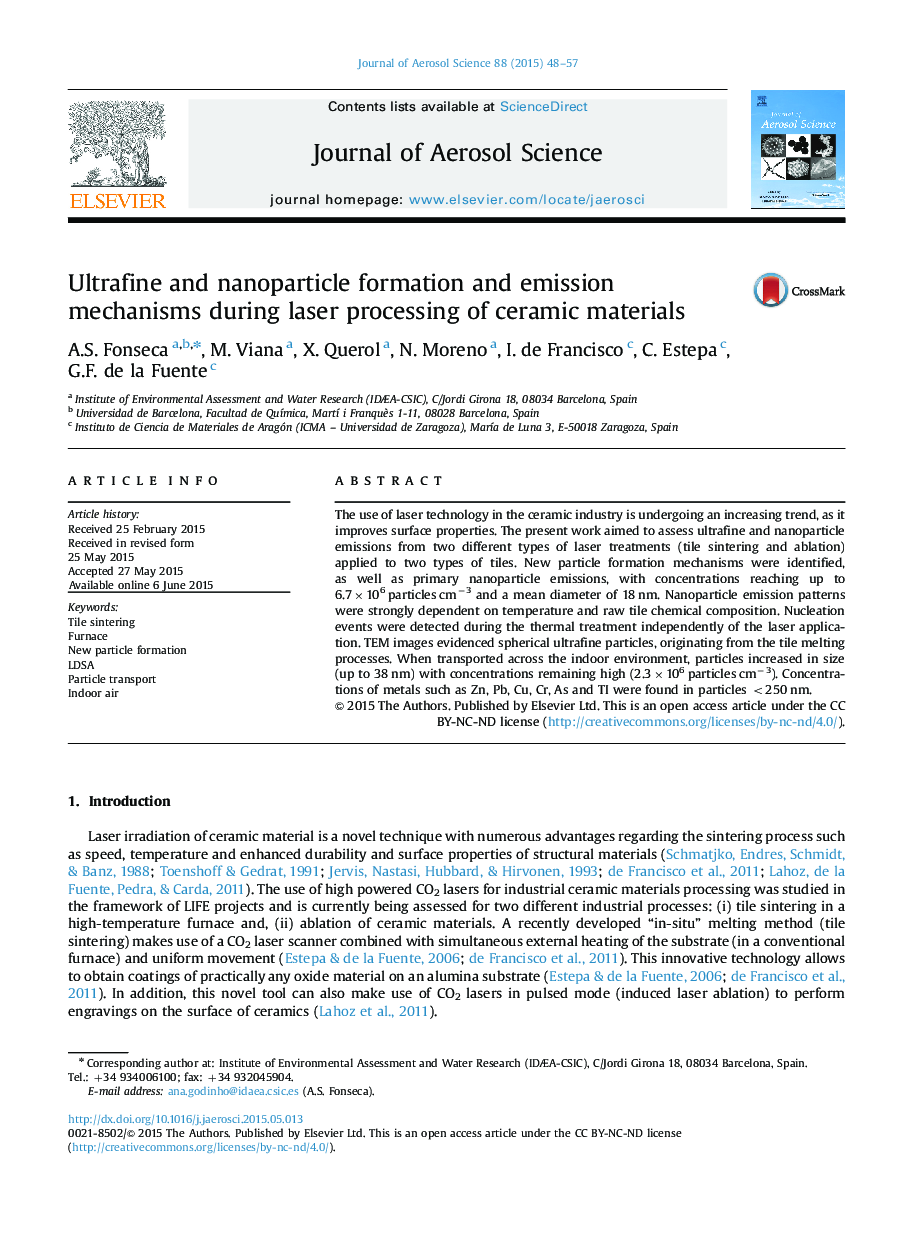| Article ID | Journal | Published Year | Pages | File Type |
|---|---|---|---|---|
| 6344434 | Journal of Aerosol Science | 2015 | 10 Pages |
Abstract
The use of laser technology in the ceramic industry is undergoing an increasing trend, as it improves surface properties. The present work aimed to assess ultrafine and nanoparticle emissions from two different types of laser treatments (tile sintering and ablation) applied to two types of tiles. New particle formation mechanisms were identified, as well as primary nanoparticle emissions, with concentrations reaching up to 6.7Ã106 particles cmâ3 and a mean diameter of 18 nm. Nanoparticle emission patterns were strongly dependent on temperature and raw tile chemical composition. Nucleation events were detected during the thermal treatment independently of the laser application. TEM images evidenced spherical ultrafine particles, originating from the tile melting processes. When transported across the indoor environment, particles increased in size (up to 38 nm) with concentrations remaining high (2.3Ã106 particles cmâ3). Concentrations of metals such as Zn, Pb, Cu, Cr, As and TI were found in particles <250 nm.
Related Topics
Physical Sciences and Engineering
Earth and Planetary Sciences
Atmospheric Science
Authors
A.S. Fonseca, M. Viana, X. Querol, N. Moreno, I. de Francisco, C. Estepa, G.F. de la Fuente,
